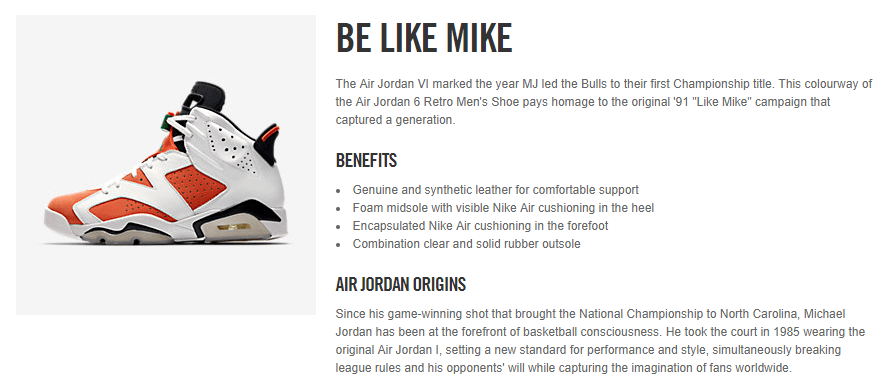Building and designing an ecommerce business has become simpler thanks to the endless number of online solutions available. SEO (search engine optimization) is crucial to every online business. Without the right skills, it’s easy to make fundamental SEO mistakes and miss out on sales.
Website SEO helps improve the overall structure of a website, making it more user-friendly as well as search engine friendly. It includes both on-page and off-page SEO techniques, designed to help improve brand visibility and drive more organic traffic.
Despite our best efforts, the chance of making simple ecommerce SEO mistakes is widespread. If you’re a newbie to the world of SEO or have just launched a new ecommerce site, here are nine common SEO mistakes and how to fix them.
1. Slow Website Speed and Download Time
There’s nothing more frustrating for a website visitor than a slow website speed. If your website takes forever to load, this is a critical SEO mistake that affects website traffic and inadvertently affects brand credibility.
As an online seller, it’s important to remember that virtual competition surrounds you. Nowadays, online shoppers have so many options. So you might be the reason a prospective customer spends money on a competitor. Making a good first impression is essential; failure to do so will result in sales. In addition, a slow page load can get your site penalized as Google hates slow websites.
SEO Mistake #1 Fix
Make use of free tools like PageSpeed Insights and Pingdom Website Speed Test. These tools will help analyze your entire site and provide you with suggestions on how to make it faster.
2. Duplicate Title Tag and Meta Description
Title tag and meta description are the small snippets of information that tells search engines what your page, product, or post is about.

Having duplicate title tags and meta descriptions makes it difficult for search engines to index your site accurately, which affects your overall site ranking. And duplicate title tags and descriptions make your site look spammy. From an ecommerce perspective, writing unique page titles and meta descriptions helps increase engagement, which helps improve the click-through rate.
SEO Mistake #2 Fix
Make use of Google Search Console and Screaming Frog. Both of these fantastic tools will help you quickly identify any duplicate title tags and meta descriptions on your website.
Make sure you add a unique page title and description to all products, pages, and posts. This way you’ll improve your chances of ranking in the top 10 search results.
3. Lack of Product Description
High-quality visual and written content on your product page, such as product images and descriptions, has a massive impact on your conversion rate.
By crafting unique product descriptions, you’ll quickly catch the attention of online shoppers. Plus, a well-written product description gives customers an insight into your brand, helping to gain their trust, and resulting in more sales.

Therefore, it’s vital that you don’t use the same description for multiple products as this could affect your site’s ranking. Also, copying descriptions from the manufacturer’s site and posting them on your website is also a big NO, because if your competitors are doing the same, then it would be difficult for you to outperform them on the search result.
SEO Mistake #3 Fix
Write a unique and detailed product description, keeping your target customer in mind at all times. Think about why the customer might be looking for your product, and give extra detail on product specifications. Learn more about how to write compelling ecommerce product descriptions.
4. Lack of Genuine Reviews
With a vast range of products available, choosing the right product is no easy task. Genuine reviews can help convert a potential buyer into a paying customer.
According to a consumer review survey by BrightLocal, 85% of consumers trust online reviews as much as personal recommendations. Therefore, a lack of reviews makes it difficult for buyers to trust your brand, affecting your site’s overall ROI.

Reviews work as an endorsement for your brand from people who have already used your product. The more reviews a product has, the more confidence a buyer has about making a purchase which is why reviews help build trust amongst buyers and establish brand loyalty.
Reviews also help boost SEO thanks to user-generated content, improving product SERP ranking!
SEO Mistake #4 Fix
So, how do you generate more product reviews? Well, one easy technique is to just ask! Of course, there are more techniques and even apps and tools that can help you increase product reviews for your ecommerce site.
5. Missing Alt Tags to Images
Adding Alt tags (alternative text) to product images is a must. By not adding Alt tags to product images you’re missing out on potential traffic from Google Image Search. It also leads to poor user experience, particularly for visually impaired users as well as for those who have disabled images in their browsers.
ALT tags are also relevant from a search engine perspective, as search engine robots can’t read/interpret images. By adding ALT tags (a snippet text), you’re helping them better understand what your product is. Making it easier for search engines to index your product, resulting in higher SERPs.
SEO Mistake #5 Fix
Adding ALT tags to images is crucial, and fortunately, Pixc’s Auto Alt Text app makes it easy by automatically adding or updating all your product images’ alt text in just a few minutes on Shopify.
If your store is not on Shopify, or you want to know more about how to use Alt text, check out this article by HubSpot on the best ecommerce applications of Alt Text.
6. Missing Social Share Buttons on the Website
Just like customer reviews and testimonials, social shares, likes, and tweets also act as product endorsements. Adding social sharing buttons on a website makes it easier for users to share your content with the click of a button, helping improve brand visibility.

You’ll often notice that most ecommerce websites add social sharing buttons at the end of a transaction or when a sale is complete. The goal is to encourage customers to share products they’ve recently purchased.
SEO Mistake #6 Fix
If you don’t have social share buttons on your website, then it’s time you change that immediately. Sites powered by WordPress can use Woocommerce Social Media Share Buttons or ShareThis Share Buttons.
7. Lack of Schema Markup
One of the best ways to differentiate your products in search result pages is to use structured data or schema markup, as it’s more commonly known. Schema markup is an integral part of SEO, as it helps you to add relevant structured data such as reviews, ratings, prices, and more right in the search results.

By adding schema markup to your ecommerce products, you’re enhancing its visibility on SERPs, helping to increase the click-through rate, leading to more organic traffic and higher revenue. In addition to adding schema markup to your products, you can also add different types of schema markup for website information, videos, site navigation, and more.
SEO Mistake #7 Fix
So, how do you add structured data to your ecommerce website? Make use of Google’s Structured Data Markup which allows you to quickly add structured data to all your products, as well as other categories.
8. Non-Mobile-Friendly Website
Not having a responsive or mobile-friendly website is the most prominent ecommerce SEO mistake. Reports show that mobile revenue surpassed desktop revenue by the end of 2017. By not making sure your site is responsive, you’re losing out on potential traffic, which will hurt your overall ROI.
Google has started penalizing websites that are non-mobile-friendly. Ensure this doesn’t negatively affect your ranking on SERPs, by checking your site is responsive and works seamlessly across all mobile devices, as well as browsing platforms.
SEO Mistake #8 Fix

Check your site on Google’s Mobile-Friendly Test. This tool will analyze your site within seconds and let you know whether or not your site is mobile-friendly. If it isn’t, then it’s time you switch to a responsive website design.
9. Not Setting up Google Analytics and Google Console Accounts
Google Analytics and Google Search Console (formerly Webmaster Tools) are free analytics tools that help you track website performance, such as organic traffic, referral traffic, web sessions, and bounce rate. It also provides you with insights into indexing status, crawl errors, and keyword ranking.
By not setting up Google Analytics and Google Console accounts, you are losing out on valuable data that will help you improve your SEO and overall website performance.
SEO Mistake #9 Fix
Rectify this mistake by setting up Google Analytics to measure the success of your campaigns. Create a Google Console account and enhance your site’s performance on SERPs.
10. Inconsistent Product Photos
High-quality photos are one thing. It’s another thing to make sure they all have a consistent size appropriate for your website. If every product photo is different, you’ll look confusing and even come off as unprofessional.
SEO Mistake #10 Fix
Resize your product photo for uniformity to make your store look professional. You could manually adjust each photo or you could let PIxc handle it through our Photo Resize App (exclusively for Shopify).
The app will analyze the existing product images on your site and automatically update them to the correct size and ratio.
Conclusion
Mistakes are all part and parcel of running a website. But it’s up to you to make sure that simple SEO mistakes don’t delay the growth of your business. You don’t need to be an SEO expert to fix these basic errors. Thanks to a wealth of online resources, your website will be SEO optimized in no time.
 Author Bio
Author Bio
Nirav Dave is the CTO & Co-Founder at Capsicum Mediaworks. A digital agency based out of Mumbai that specializes in all things Web Design & WordPress. He worships WordPress and loves to read anything and everything about this exceptional CMS.








